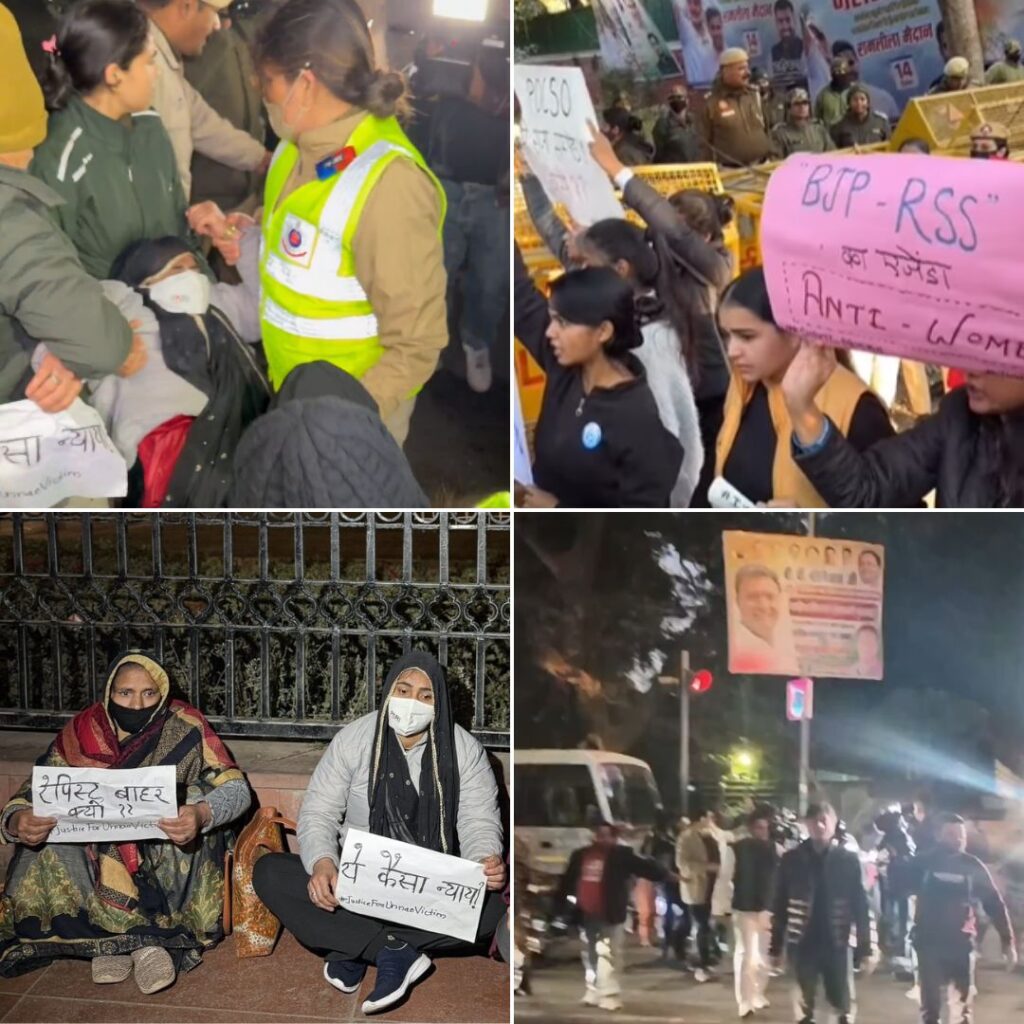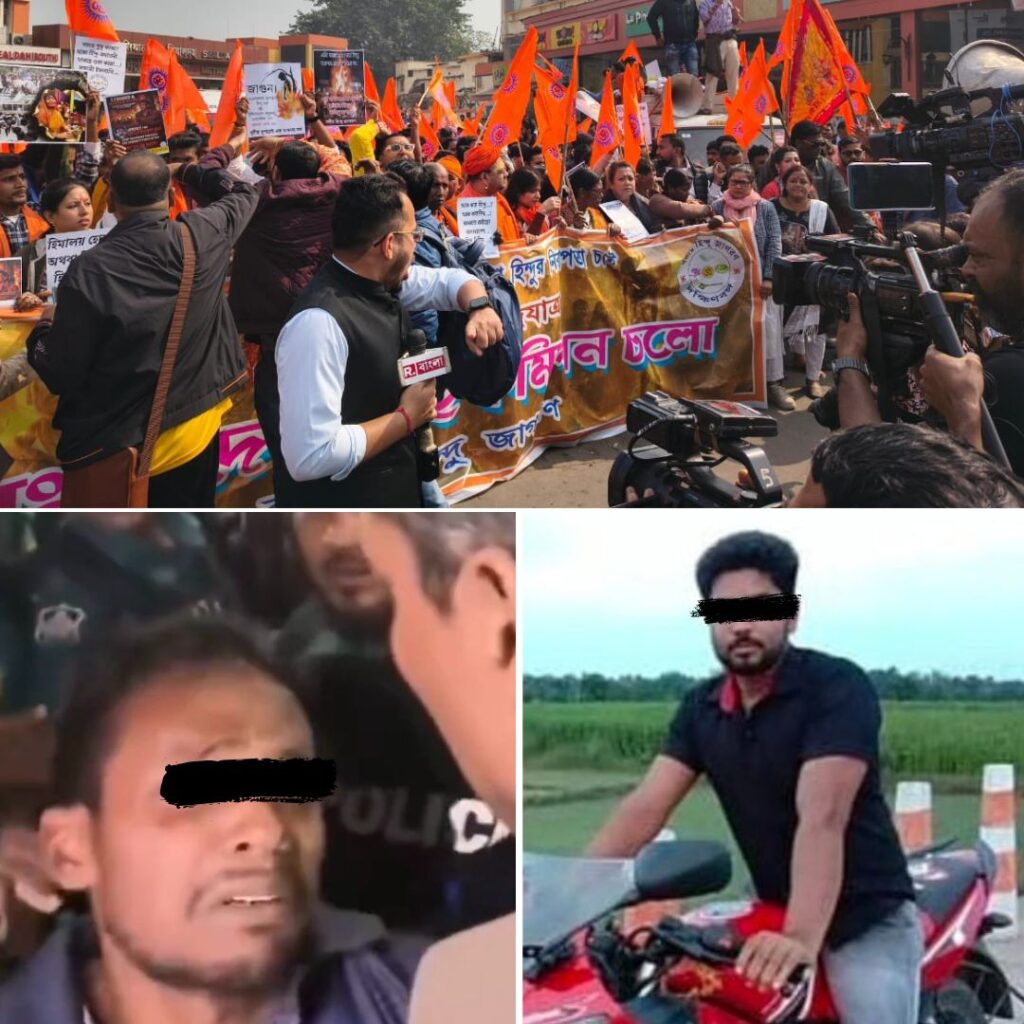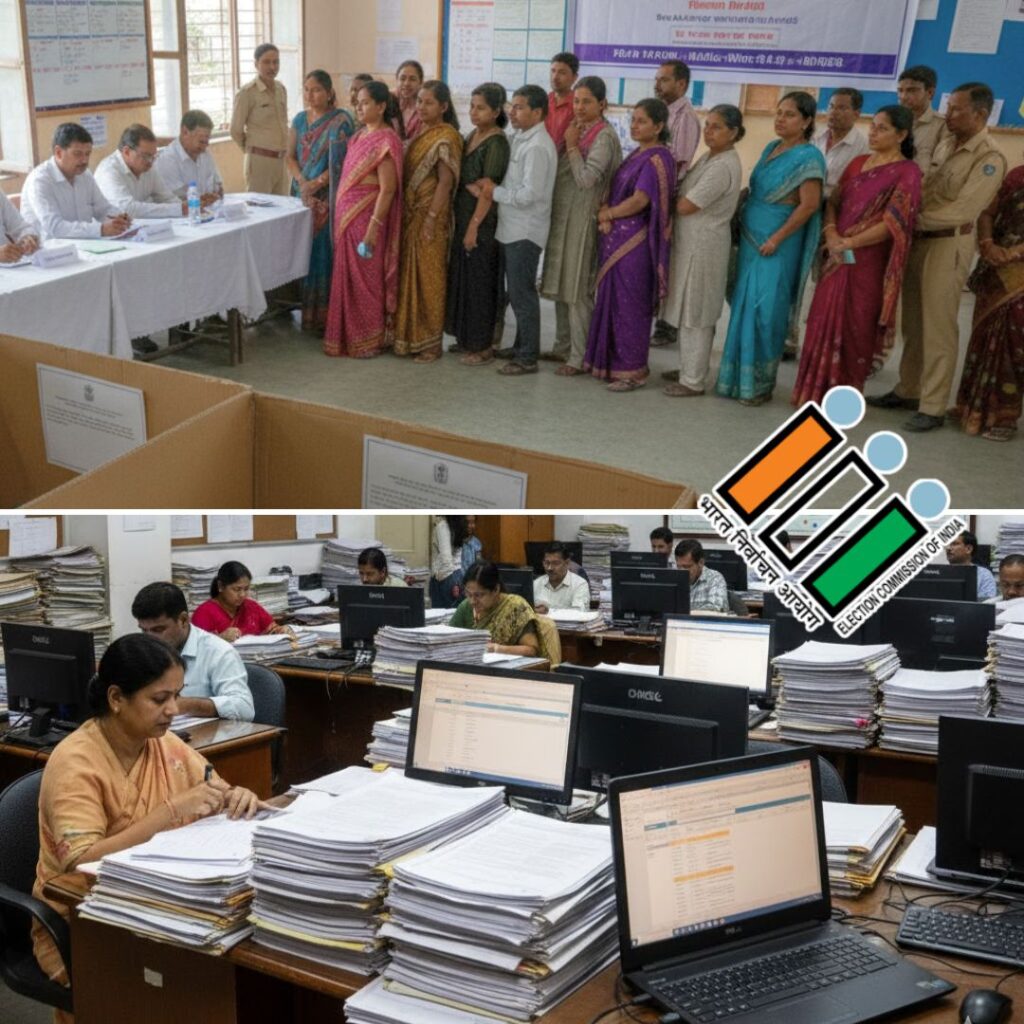‘Humare seniors ne bheja hai, unko bhi jawab dena hai‘ (Our seniors have sent us here and we need to give them an answer), a policeman tells the crowd of artists and visitors who had encircled his team at the 2020 chapter of India Art Fair, in New Delhi.
People had gathered around a large mural which was the product of the combined efforts of 10-12 artists, and the Delhi Police had dropped by the venue acting on a ‘tip’ that had informed them about ‘objectionable’ content being displayed at the exhibition.
The India Art Fair which is a leading platform for modern and contemporary art depicting the South Asian cultural landscape, was organised at NSIC Exhibition Grounds in Okhla, New Delhi, from January 30 to February 2 this year.
On the last day of the fair, the Delhi Police came to the art exhibition to investigate the ‘politically-provocative’ artwork, that an anonymous caller had complained of, in the booth curated by Myna Mukherjee.
The creation titled: ‘The Wall: Community Art Building Mural’ was painted by a blend of cis-female, queer, and transgender artists. The underlying message in the artwork was of social inclusivity – meant to celebrate the active participation and leadership of women in the recent political revolts and protests the country has seen.
The team of artists readying the mural for display.
‘It is no more just about Hindu-Muslim-Sikh-Isai being ‘bhai-bhai‘, the women of this country have displayed immense strength and unity and our work was about highlighting their spirit’, Gargi Chandola, the founder of Post-Art Project who was also one of the artists in the group, told The Logical Indian.
The booth at the art fair, where the mural was showcased, was installed by the Italian Cultural Centre who had called upon Myna Mukherjee for curating the art pieces. ‘It was an ode to women and I had invited protest artists from all over, especially those who were involved in painting murals in Shaheen Bagh’, the curator said.
‘Our booth was a 4-day-long event and we unveiled ‘The Wall’ on the last day. It was a live mural-painting exercise, in concurrence with the resurgence of popular culture that the nation-wide protests had sparked. Artists were called in batches of three to paint it live, and by 5:30 pm on February 2, the artwork was completed. We then began to engage the audience with live music, spoken word poetry, and the tying of sacred threads.’
Prayer threads (mauli) from Sai Mandir and Nizamuddin Dargah were brought to tie the paintings together – symbolising unity and togetherness. These prayer threads were also distributed amongst the audience to participate in the painting-tying activity.
Audience tying the paintings together with ‘mauli’.
‘People were crying, as Indraneel Roy sang ‘Hum Dekhenge‘. I was in tears and it was a cathartic moment. In that brief period of time, it felt as if the viewers became one with the artwork and just when our sentiments were at their peak, the Delhi Police entered’, Gargi said.
‘They were aggressive at first, but after observing that there was no mention of CAA or NRC in the mural, and after a patient explanation, they saw reason’, she added.
The police team asked the curator and the artists to translate the Urdu words which were inscribed on parts of the artwork. A ghazal by Allama Iqbal which read: ‘Sitaron Se Aage Jahaan Aur Bhi Hai, Abhi Ishq Ke Intehaan Aur Bhi Hain’ (There are many skies beyond the stars, there are many trials still to be conquered in the path of love) was looked upon with suspicion by the officials, The Wire reported.
Hafsa Aman was the calligrapher in the team. She had painted poems and couplets on the mural as asked. ‘I was invited to be a part of the creative team just 2-3 days before the event for my calligraphy skills. I can write in English, Hindi and Urdu, and I wrote whatever the painters wanted on their pieces. For some parts, we collectively discussed the writings’, she said.
Creation in progress.
One of Allama Iqbal’s famous couplets was written in the Devanagari script by Hafsa. ‘Since most know how to read the Devanagiri script, the police read the couplet and were alarmed’, she added.
The couplet read: ‘Tu shaheen hai parvaaz hai kaam tera, tere saamne aasmaan aur bhi hain‘ (You are an eagle, flight is your vocation; You have other skies stretching out before you).
‘Eyebrows were raised because of the word ‘Shaheen‘. Now, most people do not understand Urdu, neither are they well-versed with Urdu poetry. So, we had to break it down and explain that Shaheen is the word for an eagle/falcon’, Hafsa rued.
Her team had to provide the translations, meanings, and an account of their intention behind every single part of the mural that was called into question.
‘I had specified certain rulers to my artists – no slogans, or explicit political messages in the work – which they had respectfully adhered to. We were subtly showing our solidarity and the work had no mention of neither the C…












